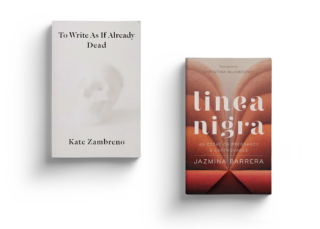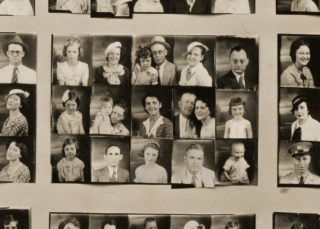
The first season of Love Is Blind, a reality show where people who have never seen each other get engaged, premiered at a moment that would become eerily advantageous: February 2020. Peddling a hackneyed critique of modern dating — the apps are superficial; nobody wants anything real! — the Netflix show stumbled upon relevance as COVID-19 began to rip through the United States and necessitate social distancing. The experimental format of forcing potential fiancés to communicate on opposite sides of a wall (the separated chambers, in the argot of the show, are called “the pods”) was suddenly and starkly relatable, as budding romance, faced with bizarre constraints, became either as chaste as nineteenth-century courtship or rapidly and perhaps prematurely committed.
Alone in my apartment, aside from my cat, I clawed for human contact through various digital avenues and found myself more absorbed by the show than any reality TV I had previously encountered. And there was something more acute about its appeal to me than mere topicality. I loved that each participant arrived attached to the idea that they should be married as quickly as possible, and then became invested in an idealistic (and specious) vision of an invisible person. I relished watching the contestants negotiate with each other — and with themselves — as this vision collided with the reality of living with a relative stranger in the pressure cooker of a hasty engagement.
What draws me to this genre, in which contestants look for someone willing to take on the lifelong project of warding off their alienation, is, I confess, some unholy mixture of condescension and identification. I was once like these people. In a past life, though I wouldn’t have admitted it at the time, I was looking for a husband. I was, by all outward appearances, a nice straight woman dating a nice straight man. We’d fallen in love in a brisk and heady manner, and he seemed game to get married and have children. This was my chance to form a group of people who were legally and genetically bound to me and would therefore be obligated not to desert me. But, if what I had been seeking was within reach, I wondered, why was I so miserable all the time?
In the second season of Love Is Blind, which I gleefully consumed the moment it came out this year, the pairing who most intrigued and pained me was Mallory and Salvador. Mallory, a tough, beautiful, remote woman from the south side of Chicago, has an immediate, easy chemistry with both Sal and another man she meets in the pods, Jarette. From what little footage we see of their hours of conversation, it is difficult to understand the contours and the depth of the contestants’ relationships, but even the highly edited vignettes can be telling. Mallory seems drawn to Jarrette’s masculinity as they bond over their mutual love of sports, and their flirtations often teeter on the edge of the overtly sexual. Her dynamic with Sal is sweeter and more gentle; she swoons over the sound of his voice and his sensitivity, and when she admits, during a game of Never Have I Ever, that she once slept with a woman, Sal’s mild shock betrays a certain innocence. When decision time approaches, Mallory is still conflicted. Sal, who studied opera in college, wins her over by playing a song he wrote on his ukulele that declares her as his favorite. In the battle of narratives that drives her choice, Sal prevails by playing the soft romantic lead, a trustworthy and harmless figure. It is as though her more carnal reaction to Jarette is evidence that he might not be the docile long-term match she is seeking.
After Sal and Mallory get engaged and meet in person for the first time, she bluntly admits in an interview that she doesn’t feel a strong spark of attraction to him. (Like everyone else on the show, Sal is indisputably conventionally attractive, if slighter than the average beefcake in the reality TV sphere.) In the four weeks they have to travel and live together before declaring, at the altar, whether they will actually say “I do,” she is plagued by the discrepancy between her enthusiasm for the hypothetical Sal and her involuntary reaction to his physical presence. It is tempting to moralize about her reaction, but to do so would be to deny the inherent capriciousness of sexual and romantic desire.
One night during the group honeymoon in Mexico, all the men and women, previously divided by gender, convene as a collective for the first time. Awash in a general giddiness and in various love-triangle-related tensions, everyone starts taking shots. Mallory has a disastrous private conversation with Jarrette: buzzed and enraptured, she admits that Jarrette is more her type than Sal. He can’t resist pointing out that Sal got her a silver engagement ring despite the fact that she prefers gold, which Jarrette knows because he asked. They talk for a conspicuously long time. In a side interview on the nearby beachfront, Sal, teary-eyed and likely drunk, says, “I don’t know what was said, but I know that she’s not interested in me. And I want to go home.” By dinner the next evening, they’ve shakily resolved the matter, and he is apologizing to her for his reaction.
The remaining weeks of their relationship are as harrowing as you might expect. Sal tries to woo her (there is more singing, more ukulele — an increasingly depressing spectacle to witness), and she strains to be receptive but is clearly unmoved. There is a slightly mysterious off-camera tiff involving the sudden appearance of Sal’s ex, and Mallory’s outsized reaction hints that she may be grasping for concrete problems that will justify her indifference. As Sal goes through the motions, any charisma he might have the capacity to muster is crushed under the inevitability of her detachment. On wedding day, he retains a modicum of dignity by being the one to announce first that he cannot marry her. As they regroup after the thwarted ceremony, Mallory — bafflingly, after all this — says that she might have said yes if he had. By some standards, this is what a good marriage looks like: two decent and relatively faultless people who tolerate each other. Marriage is the path to adulthood, and to be an adult is to be so practical that mediocrity will not get in the way of your quest for stability.
My ex-boyfriend was a good man, too. I wanted that to be enough. But something murky pulled at me, some sense of an alternate life I had been too risk-averse to live. Fear had nudged me toward my most conservative impulses, the ones that said marriage and children were probably the best ways to assure I would not be alone and alienated from my peers in middle age and beyond. It soon became clear, though, that if my goal was to remain connected to other people, I was not achieving it; there is, after all, no deeper loneliness than that felt in close proximity to another person. Riding the wave of ironic misandry that was cresting in the culture at the time, I thought, why not toss men aside and try dating women instead? (I would later need to reevaluate this facile dismissiveness toward men when it turned out I was something resembling a man myself.) And so at the age of twenty-nine — the impending deadline of my thirtieth birthday looming, my personal life humming along exactly as everyone around me thought it was supposed to — I dismantled what I had constructed. In the end, I broke up with not only my boyfriend but with heterosexuality itself.
I often shudder to think of what my life would look like now if I had not taken a sharp turn away from forming my own nuclear family. How long could I have kept up the ruse? How much misery could I have swallowed? I remember it the way one remembers a potentially fatal near miss, a stumble at the edge of a cliff. I pity the poor would-be contented spinsters, queers, and degenerates trapped in the endless obligations of these traditions. When I watch people go on television to hunt for a spouse, I wonder who they would be if they did not believe in the urgency of finding a mate for life. There is a perverse solace, perhaps, in seeing them suffer as they contort themselves to fit the shape of what I escaped, reassuring me that my decision was the right one. But I can’t pretend, either, that I am totally liberated from the craving for security I spent so long nursing. If I study them closely enough, perhaps I can understand the power of this hunger and overcome it at last.
There are only two seasons of Love is Blind, and once I’d polished them off, I found myself wanting more. If Love Is Blind was my gateway drug, then Married at First Sight is the hard stuff. Its premise is exactly what it sounds like: the people who are brought to the altar, in this case, have never spoken and do not know so much as each other’s names. The show, a cheaper-looking network television affair on air since 2014 and conceived of by the same producer as Love Is Blind, does away altogether with the pretense that sexual desire should be part of the impetus for matrimony. A team of so-called experts conducts interviews with contestants and selects those they believe to be the best matches. Then the participants forge legally binding marriages that cannot — I have looked this up more than once — be annulled. After two months, they convene in a final counseling session with the experts and decide whether to stay together or get divorced.
The theory that undergirds Married at First Sight is that loving someone is less a matter of passion than it is of labor. It’s a sound enough point of view, but in this context it often serves to justify passion’s total and undeniable absence. Marriage, the viewer is reminded frequently, takes work — the couples are expected to resign themselves to their partners by performing a set of dutiful tasks: engineering quality time together, communicating, compromising. When one spouse struggles to locate their partner’s allure, the experts invoke the importance of “building attraction” — an ominous phrase, as anything that must be built does not exist. The contestants ostensibly buy the experts’ theories, or, at least, would very much like to be married at any cost. Their enrollment in the experiment is a rather bleak tell: they are more committed, theoretically, to the institution of marriage than they are to the individual they have agreed to marry. To participate in the show is an objectively bad decision (unsurprisingly, the majority of its marriages end in divorce), but if I viewed its contestants as two-dimensional rubes, I’d have little reason to watch. Are they here, I wonder, because of some austere pragmatism? Or are they so deeply romantic that they believe in their capacity to love almost anyone? The answers, it seems, vary from person to person. The pragmatists tend to insist that they are sufficiently romantic, and the romantics tend to insist that they are sufficiently pragmatic.
In the most depressing cases, spouses reveal themselves as detached and untrustworthy. Others do their workmanlike best but are too afflicted to muddle through the requisite trials with much grace. But the most revealing cases are the borderline ones: pairings that, according to the experts, have all the elements of a feasible marriage, except for the pesky problem that these two people may not be obsessed enough with each other to stay together for the rest of their lives. Sometimes they break up, and sometimes they stay married anyway. The experts treat instances where participants are honest about their ambivalence and decide not to pursue what might be a workable marriage as moral failures.
From the beginning of the show’s tenth season, I thought Katie and Derek, two blandly cute mid-twenty-somethings who look like they could be cousins, would make it. When they meet at the altar, they both look relieved. In the next leg of the show, when the couples set off on a group honeymoon, hotel beds covered in rose petals can prove to be a gauntlet for those not in the throes of immediate sexual chemistry, but Katie and Derek are at ease. Alongside one couple who have a fight on the first night and sleep in separate hotel rooms, and one wife whose husband tactlessly describes his lack of attraction to her, they appear to be thriving. One of the tricks of the show’s structure is the way it begins with an adrenaline rush that can be easily mistaken for the first blush of the romance of a lifetime — at least for those pairs who don’t find each other immediately off-putting.
But there is something tentative in Katie’s demeanor. After the honeymoon, they both describe a sense of stagnation: Katie admits to lingering feelings for her ex, and Derek is convinced he cannot fall in love in less than six months to a year minimum, essentially guaranteeing that he will not tell her he loves her before the deadline when they must decide whether to get a divorce. In the following weeks, Katie’s tone becomes increasingly arch, and Derek takes on a posture of defensiveness. His notion of love is lofty to the point of naïveté: alone, speaking directly into the camera after one of their arguments, he says wistfully, “I feel like in a perfect world we’d all fall in love once.” His many dreams — to build a treehouse, to skydive over the tropics, to write a Christmas song — become a vessel for Katie’s antipathy, a symbol to her of his unseriousness and his refusal to prioritize her and their hypothetical future offspring.
In the days before the final decision, Katie meets with her parents and brashly expresses her disdain. She admits she had hoped that the experts would give her someone on the upper range of her age limit of thirty-two, but that instead she got “fresh, baby-face Derek, with a baby personality to match.” At one last dinner before the session, Derek gamely absorbs Katie’s derision and promises to fight for her. Facing the panel of experts — who encourage the preservation of any marriage that is not egregiously awful, irrespective of the spouses’ deepest and truest desires — they decide to give it a shot and stay married. But on the reunion episode, shot months later, they announce that they have since divorced.
The formats of both these shows, Love Is Blind and Married at First Sight, are so preposterously extreme that each new installment becomes an accidental exposé of the tensions and contradictions of the institution that they are purportedly attempting to celebrate. And yet to see these tensions laid bare elicits — alongside condescension and identification — sympathy. I feel a perplexing warmth for the characters and the parts of myself they allow me to parse. I’ve been in Katie’s position, as I was with the aforementioned ex, frustrated to the point of cruelty, so tainted with distaste that his every minor behavior struck me as evidence of his unworthiness. I have, at other times, been a Derek or a Sal, caught in the riptide of a lover’s scorn, doomed but uselessly thrashing.
No relationship, queer or straight, is exempt from self-delusion, from the maddening gap between the grandiosity of desire and the banal details that can extinguish it. Even the gay rights movement was defanged by assimilationists who made the right to marry its most visible and well-funded priority. Though I abandoned the value system that demanded that I become a wife and mother, it can be hard to shake that old longing for the comfort of predictability, for someone who will sign a piece of paper that says they have to love me until one of us dies. People should wed if they want to; I have a certain respect for husbands and wives, who engage in the ongoing slog, relevant to many other forms of love, of cherishing one finite and imperfect person.
The plight of the unmarried, however, is likewise relevant to the married: to resist marriage is to accept that precarity is inevitable and emotions are ungovernable.


